UK: Chitral Elephant Hawkmoth; Obscure Elephant Hawkmoth
Choerocampa rivularis Boisduval, [1875], in Boisduval & Guenée, Hist. nat. Insectes (Spec. gen. Lepid. Heteroceres) 1: 280.Type locality: Simla, India.
(Taxonomic notes. (i) Kernbach (1958) regarded this species as a subspecies of Deilephila elpenor (Linnaeus, 1758), an opinion he shared with many others. However, Ebert (1974) provided convincing evidence that Deilephila rivularis is a valid species.
(ii) The LECTOTYPE is a female in the Carnegie Museum, Pittsburg, Pennsylvania, USA, bearing two labels. One states 'rivularis B, Darjiling', the other 'epilobis BV, Simlah'. In his explicit description of Deilephila rivularis, Boisduval stated quite clearly that this specimen was from Simlah [Simla], but added that a second specimen was reared by a Captain Shervill from an 'elpenor-like' larva collected at Darjeeling. The latter was probably the source of the incorrect labelling. The correct type locality is therefore 'Simlah [Simla]'. Deilephila rivularis does not occur farther east than Uttar Pradesh, India. The individual raised by Capt. Shervill was Deilephila elpenor macromera (Butler, 1875).)
Holarctic; western Palaearctic region. Pleistocene refuge: Monocentric -- Sindian refuge.
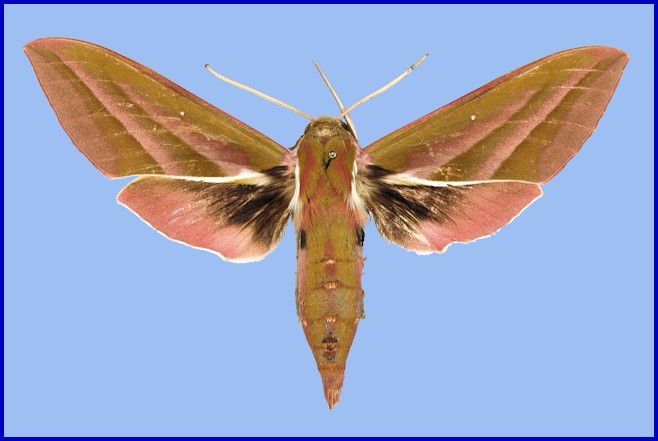
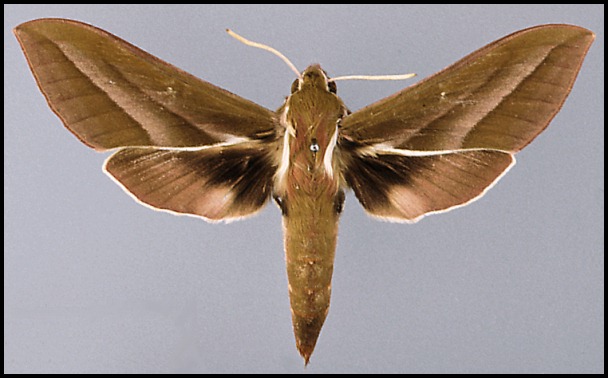
Wingspan: 64--82mm. Very like Deilephila elpenor, but with the rosy red parts of the body and wings usually (but not always) more heavily suffused with cinnamon, the red coloration being less bright than in Deilephila elpenor, especially on the wings. Marginal pink area of hindwing broad, especially towards apex. Basal black area with a ragged edge, and extending to anal angle. Generally more easily identifiable from Deilephila elpenor by the presence along the dorsal line of the abdomen of a series of white spots in the median pink stripe on the posterior margins/tergites of the segments. There are also lines of dorso-lateral and ventro-lateral spots of the same colour, which can be present in Deilephila elpenor. In the male genitalia, the processes of the sacculi are bent claw-like and strongly sclerotized. Phallus anteriorly with a noticeably strong, subapical, oblique, dentate ridge, much more so than in Deilephila elpenor. Even the single cornutus is more pronounced.
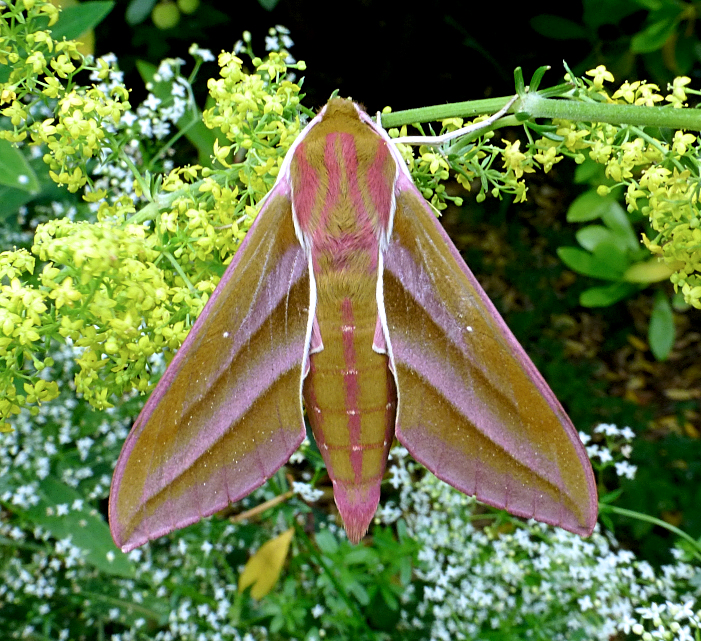
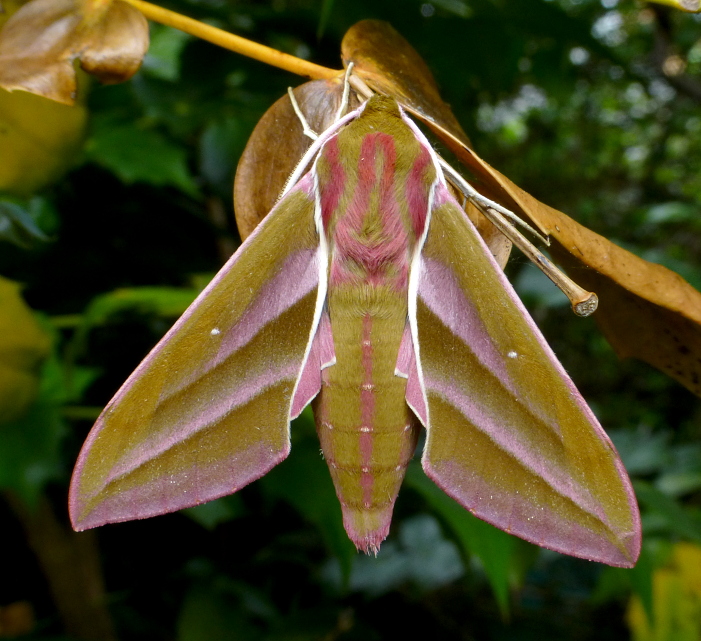

Little known, except that it tends to occur at 2000--4000m.
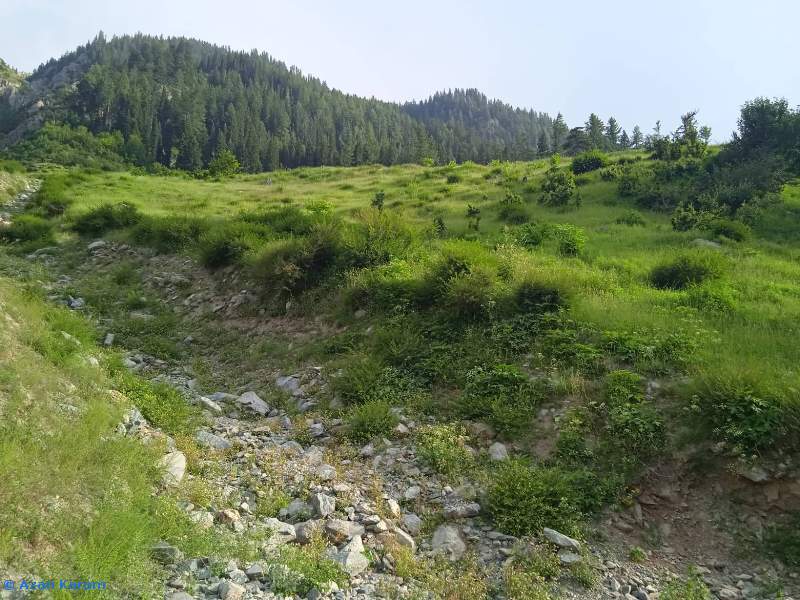

Bivoltine; February/March, and late June and July, so far as known.
OVUM: Medium (1.75 x 1.20mm), oval, with a dorsal depression, clear yellow-green. Changes to yellowish-green before hatching.
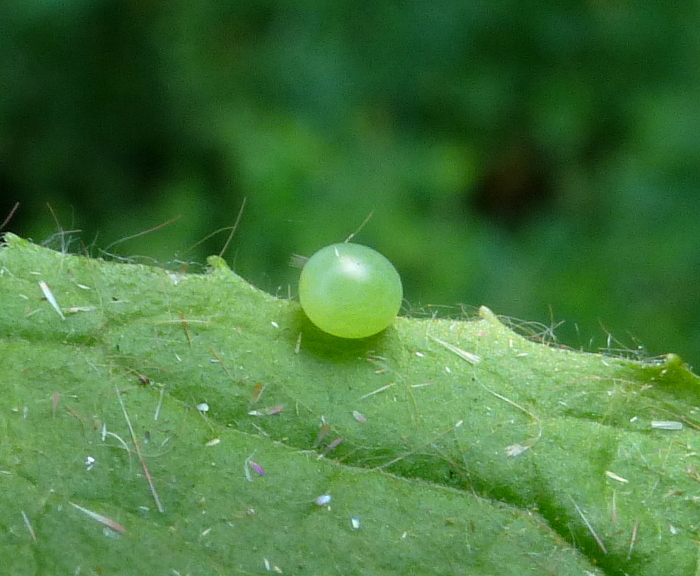
LARVA: Full-fed, 60--80mm. Dimorphic: brown and green.
As Deilephila elpenor (Bell & Scott, 1937), but larger and horn of full-grown larvae totally white.
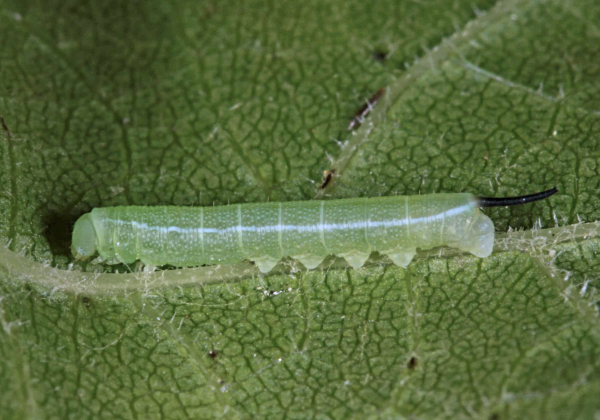
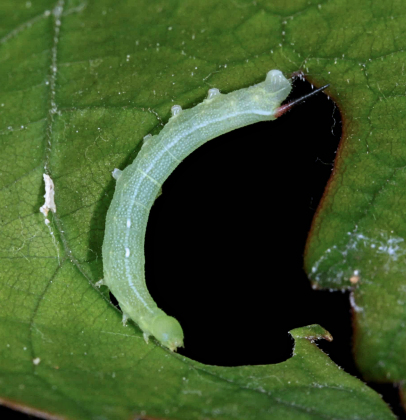
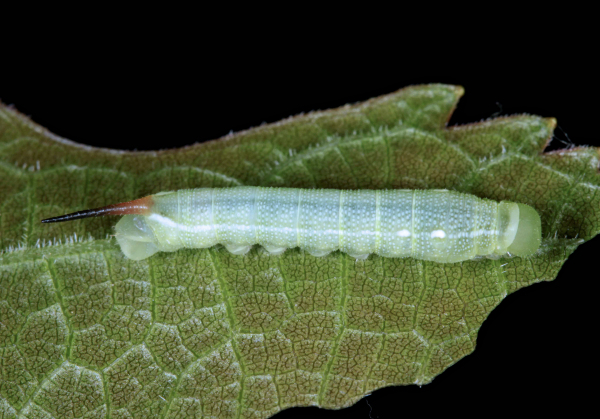
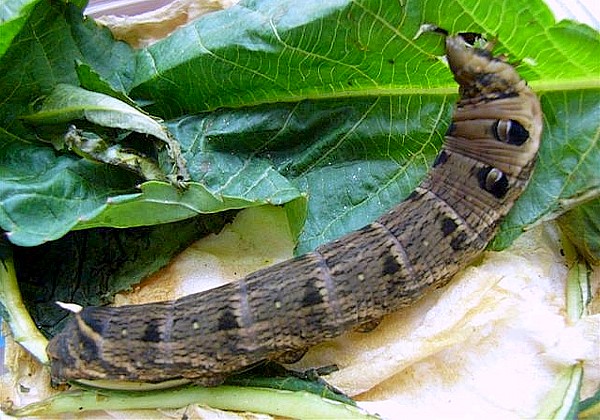
Hostplants. Arisaema and Impatiens in India (Bell & Scott, 1937); on Impatiens glandulifera Royle in the Kullu-Manali Valley, Himachal Pradesh, India (Pittaway, pers. obs.). On Impatiens edgeworthii Hook. f. at Utror, Swat Valley, Khyber Pakhtunkhwa, Pakistan (Azan Karam, pers. comm. 2022).
PUPA:
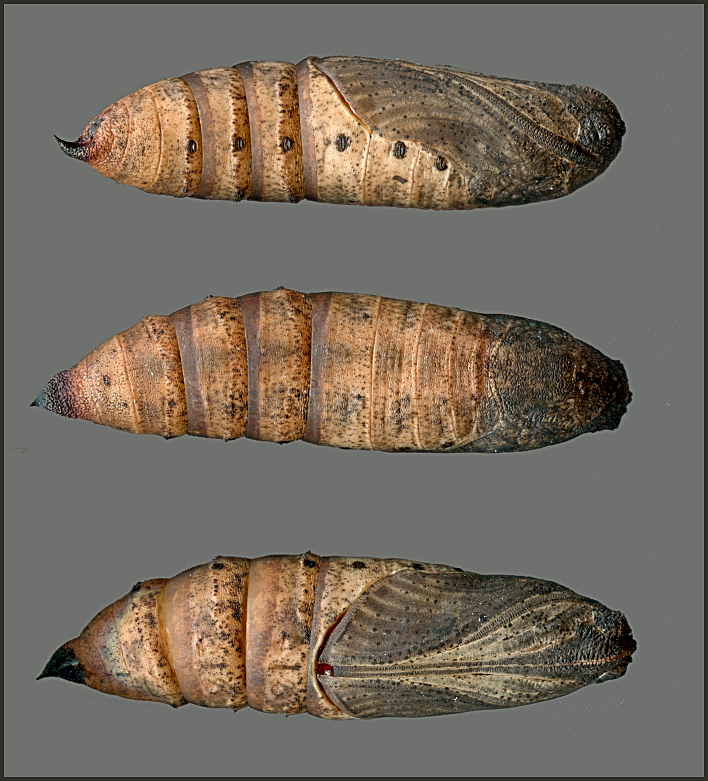
Unknown.
Central Afghanistan (Danner, Eitschberger & Surholt, 1998) and eastern Afghanistan (Safed Koh Mountains, Kotkai) at 2350m (Ebert, 1974), as well as Pakistan as far south as Karachi (Butler, 1881; Bell & Scott, 1937; Ebert, 1974; Rafi et al., 2014; Humairah Hanif et al., 2016; Haxaire, Gujjar & Saeed, 2017).
Extra-limital range. Northern India as far east as Dehra Dun and Munsyari, Uttarakhand (Mountainjen, iNaturalist 2024), and Nepal; several localities are given for Himachal Pradesh, India, by Sidhu & Nair (2017). Records from Sikkim are almost certainly erroneous, even though there is a specimen in the Natural History Museum, London, attributed to this locality.
 Return to species list
Return to species list